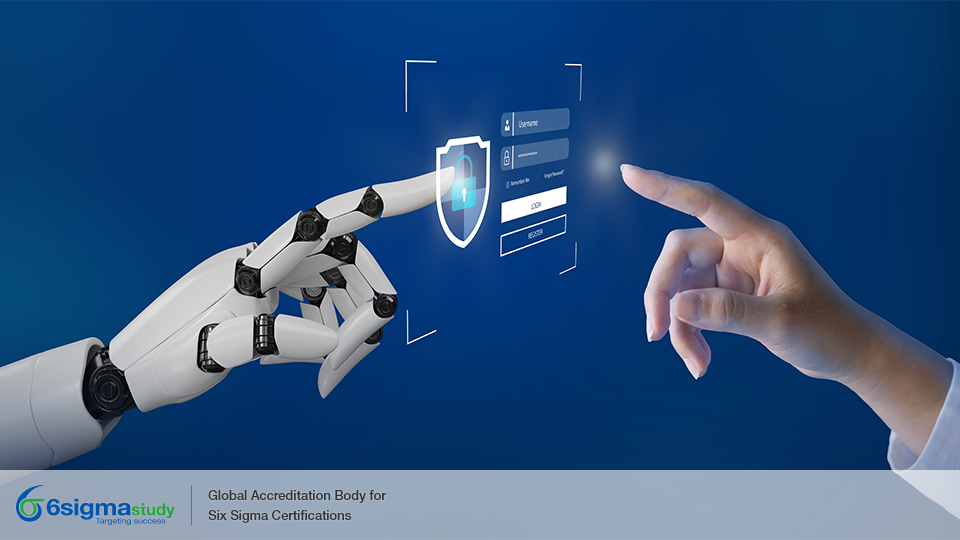Lean Six Sigma Methodology in Cyber Security Operations
Posted by 6sigmastudy® on February 16, 2024 | Six Sigma Methodology
Keywords: Six Sigma 6sigmastudy Six Sigma in Cyber Security Operations Six Sigma Yellow Belt (SSYB™) Six Sigma Green Belt (SSGB™) Six Sigma Black Belt (SSBB™) Lean Six Sigma Green Belt (LSSGB™) Lean Six Sigma Black Belt (LSSBB™) Free Articles Free Six Sigma Articles TQM Six sigma define dmaic dmadv
In the swiftly changing digital environment, organizations face a constant worry – the looming threat of cyber security breaches. Despite technological progress enhancing security, the persistent issue is human vulnerability. This article examines how Lean Six Sigma principles and tools can strengthen cyber security. By focusing on identifying and correcting harmful human behaviours, these methodologies offer a promising avenue to fortify defences against cyber threats across diverse industries.
Decoding Human Influence on Cyber security
Using passwords that are easy to guess or falling for tricks like social engineering can make computer systems vulnerable. It's important to realize how much these human-related behaviours affect the overall security of digital systems. That's why there's an urgent need for actions that actively deal with and reduce these challenges. By taking these steps, organizations can make their cyber security defences stronger, creating a safer and more protected space against possible dangers and unauthorized access. Recognizing the role of people in cyber security highlights the importance of a complete and careful approach to managing risks in the digital world.
Using Lean Six Sigma to Improve Cyber security
In the world of improving processes and minimizing mistakes, Lean Six Sigma is well-known for its effectiveness. Now, it's being used to address cyber security challenges related to human behaviour. The DMAIC (Define, Measure, Analyse, Improve, and Control) approach offers a clear method for understanding and fixing human actions that can be risky for computer systems. This structured approach helps in identifying, analysing, and rectifying these behaviours, making systems more secure. Essentially, Lean Six Sigma provides a practical and organized way to make sure that human-related factors don't become threats to the safety of digital systems.
Defining the Core Issue
At the beginning of the process, it's crucial to clearly define the human behaviours affecting cyber security. This means recognizing weaknesses such as using easily decipherable passwords, falling for phishing attacks, or having lax authentication rules. By doing this, a solid groundwork is laid for focused improvements. Identifying these vulnerabilities is like pinpointing specific areas that need attention to make things better. It's akin to shining a light on where the problems lie so that efforts can be directed towards enhancing and securing those aspects. This clarity in understanding the human element sets the stage for targeted and effective cyber security improvements.
Data Collection in Cyber security
It's essential to measure the impact of human actions on cyber security to grasp the problem's scale. Gathering data on incidents, breaches, and security violations gives valuable insights into trends. For example, studies reveal that 85% of successful breaches involve human factors, highlighting the necessity for targeted improvements. This emphasizes the importance of focusing efforts on enhancing human-related aspects to strengthen overall cyber security defences. In essence, quantifying the influence of human behaviours provides a clear picture, guiding efforts toward effective and necessary enhancements in cyber security practices.
Root Cause Analysis
Using Lean Six Sigma tools, organizations can investigate the root causes of human-related vulnerabilities. This involves looking into issues like training gaps, awareness deficiencies, and inadequate policies. By doing this analysis, specific areas needing improvement become clear. For instance, if there's a lack of awareness leading to falling for phishing attacks, the analysis might highlight the necessity for better training programs or advanced email filtering systems. This approach ensures a targeted and effective strategy to enhance cyber security by addressing the underlying causes of vulnerabilities associated with human behaviour.
Keys to Better Results
Once organizations identify the root causes, they can make specific improvements. This involves implementing comprehensive cyber security training programs, awareness campaigns, and stronger policies to cultivate a security-conscious culture. For example, regular training sessions can educate employees on best practices, how to identify phishing attempts, and the importance of maintaining strong password hygiene. By taking these actions, organizations aim to create a workforce that is well-informed and is actively contributing to the overall security of the digital environment.
Organizations need strong control measures—monitoring, auditing, and enforcing cyber security policies. Lean Six Sigma tools like control charts track progress and identify needed corrections. Although technology is crucial, human behaviours pose risks. Applying Lean Six Sigma principles addresses and eliminates these vulnerabilities. Real-world success stories in healthcare, finance, and manufacturing show the effectiveness. Prioritizing human factors helps organizations strengthen cyber security, defending against evolving threats and safeguarding critical assets.
For more such interesting articles on Six Sigma and its concepts, please click here

